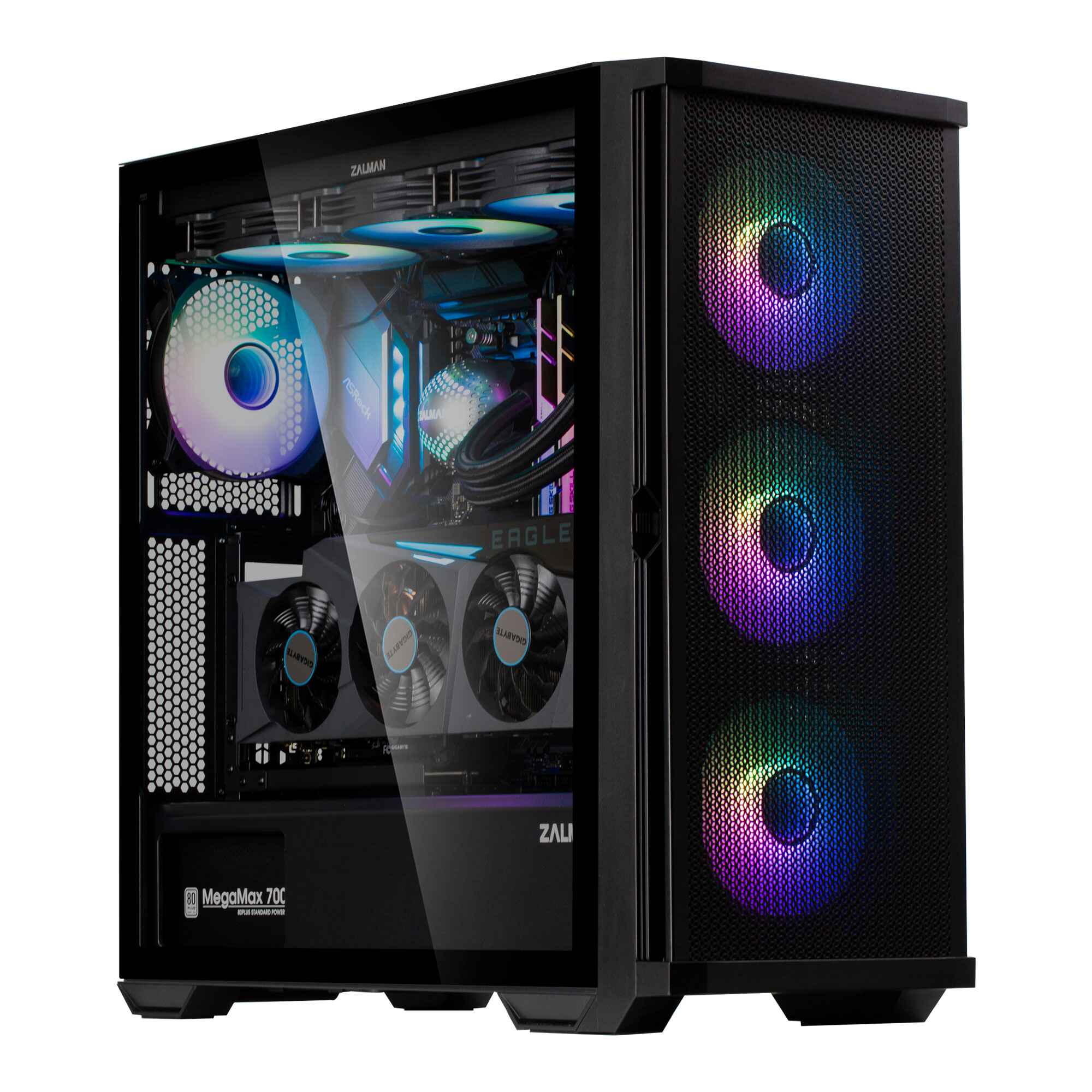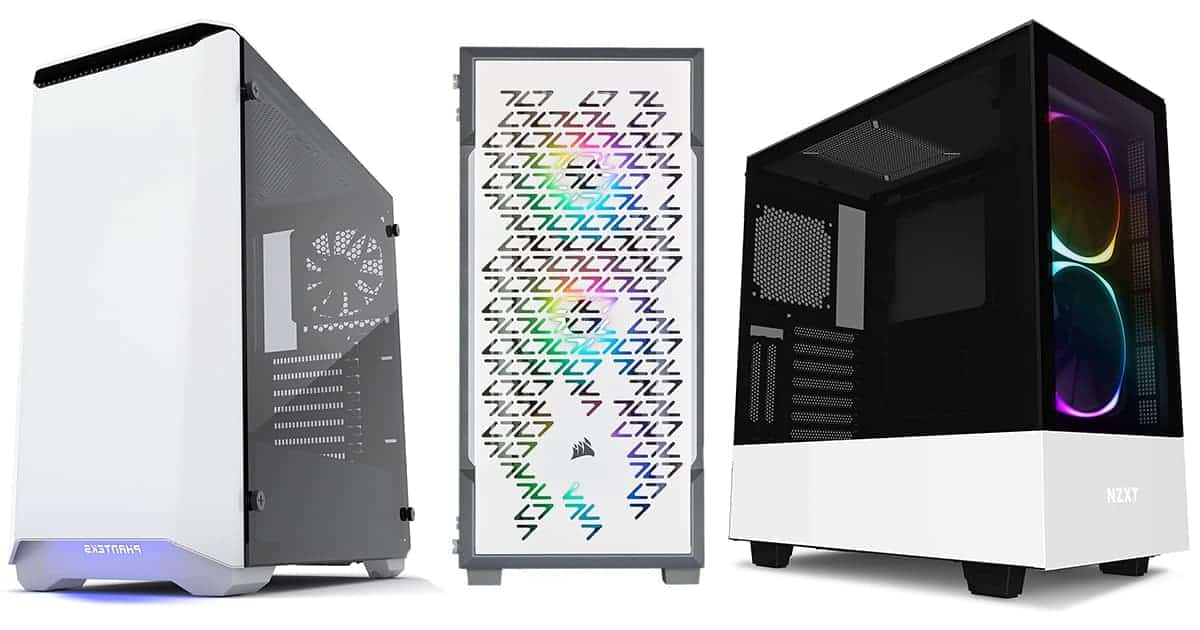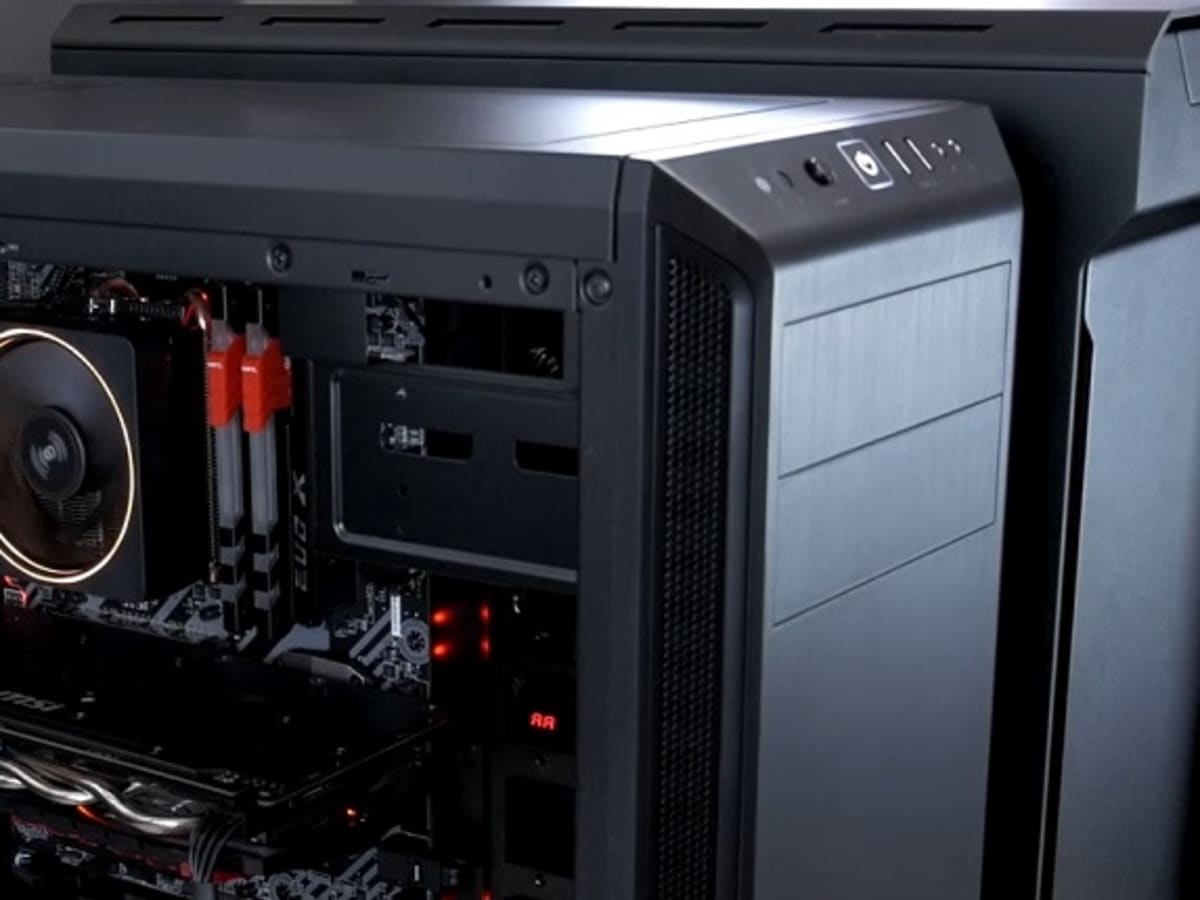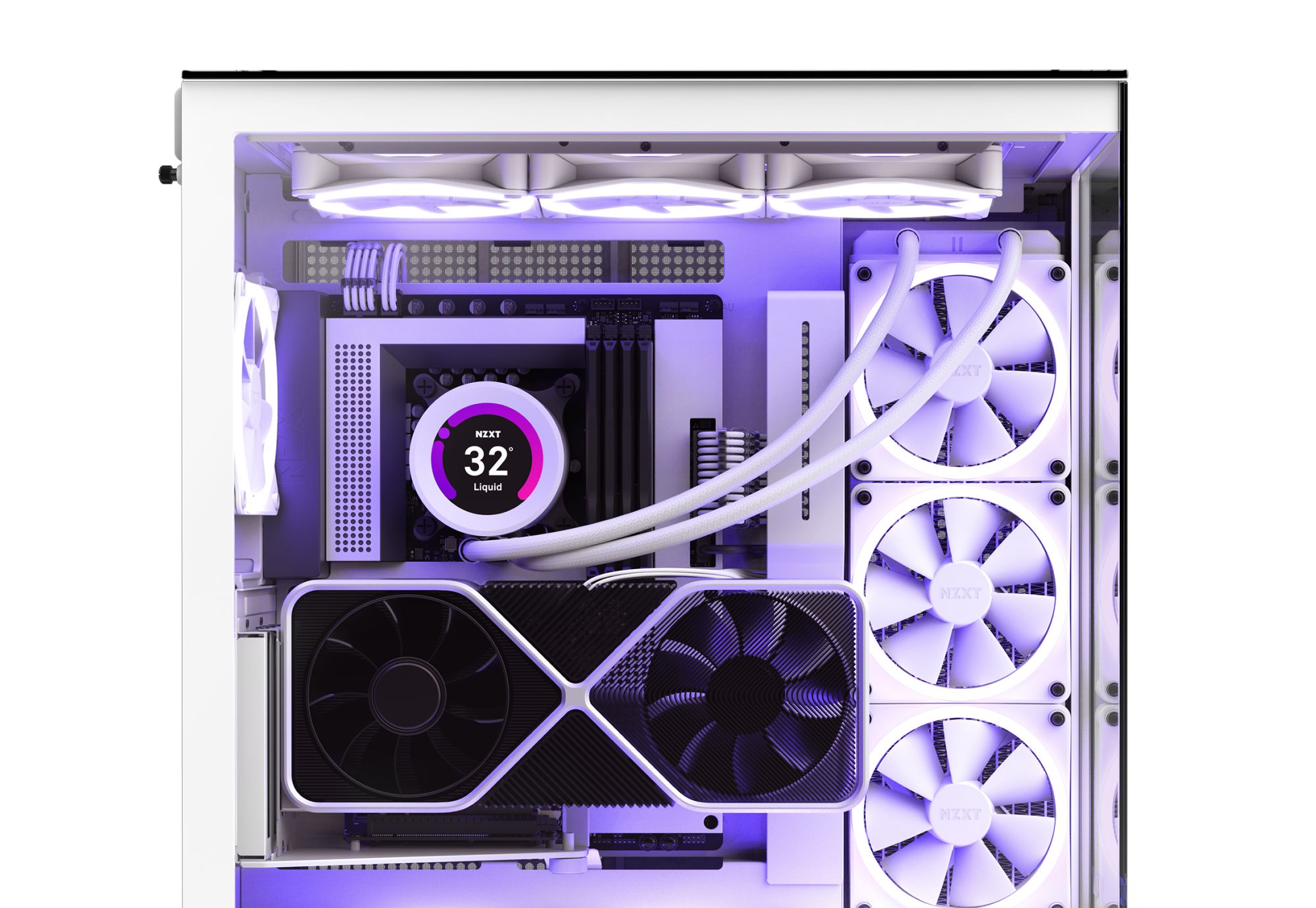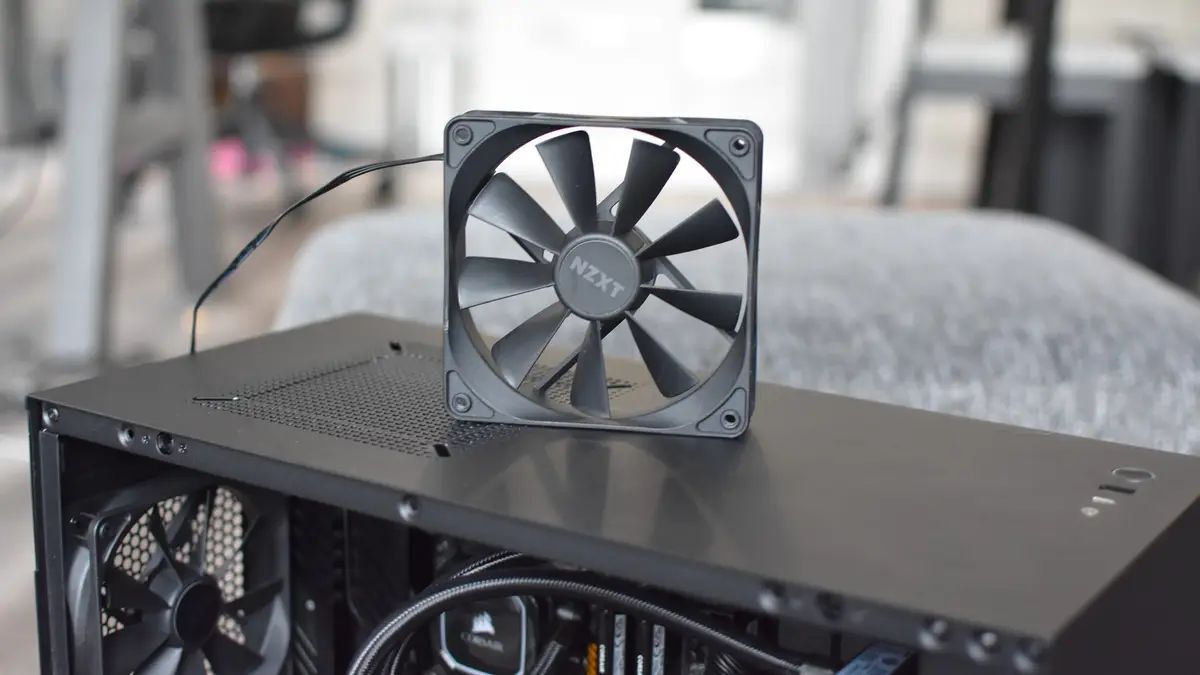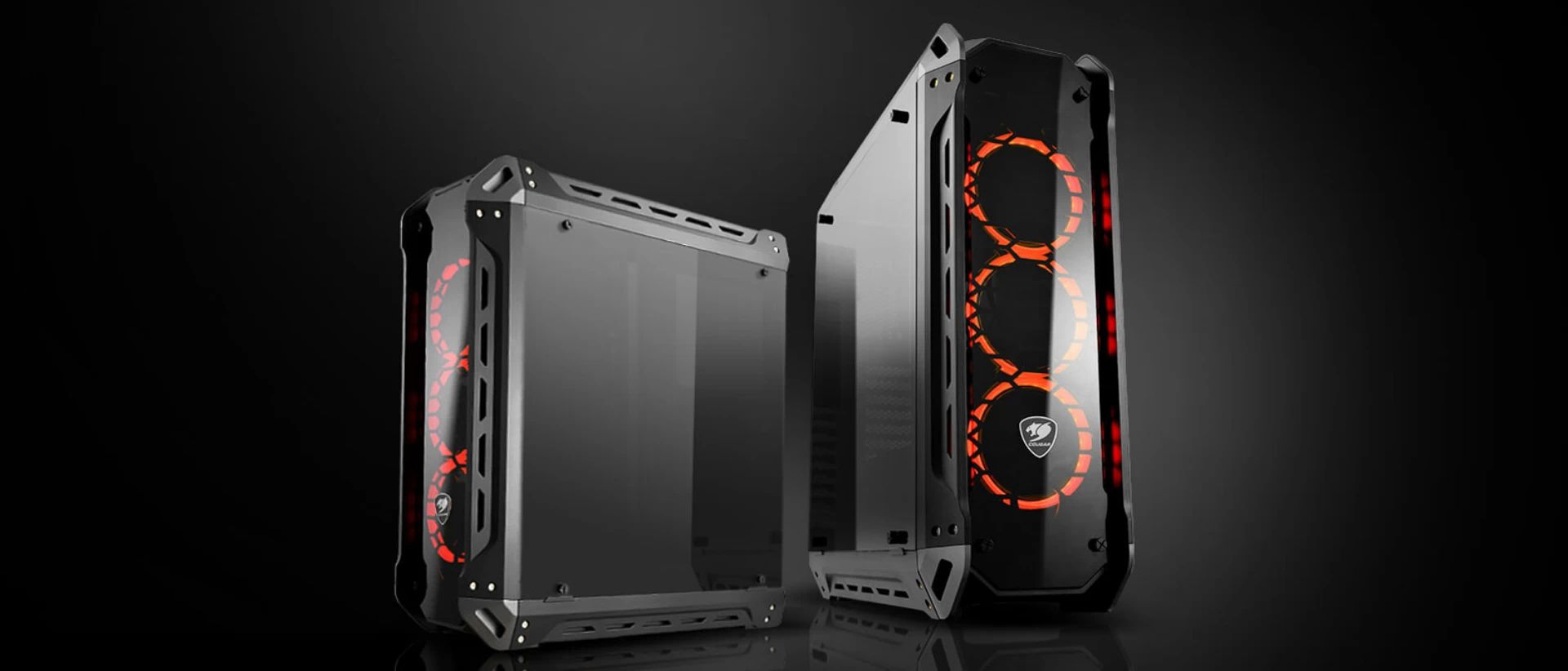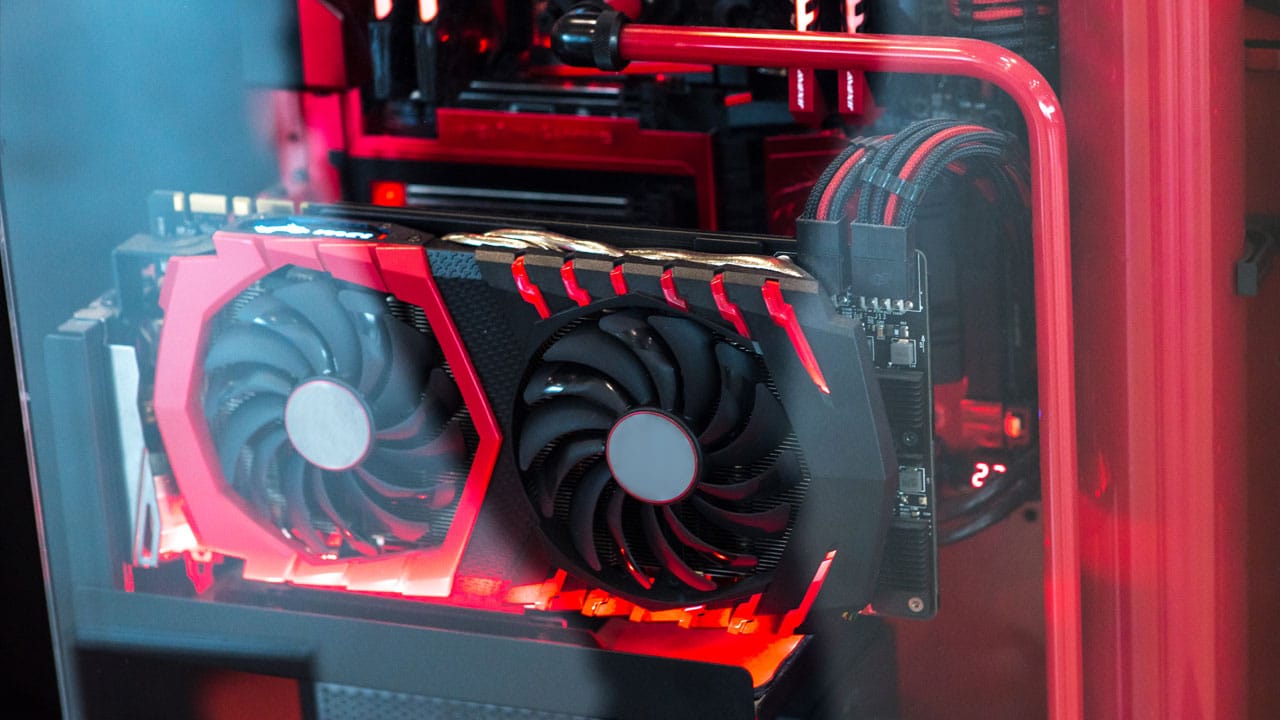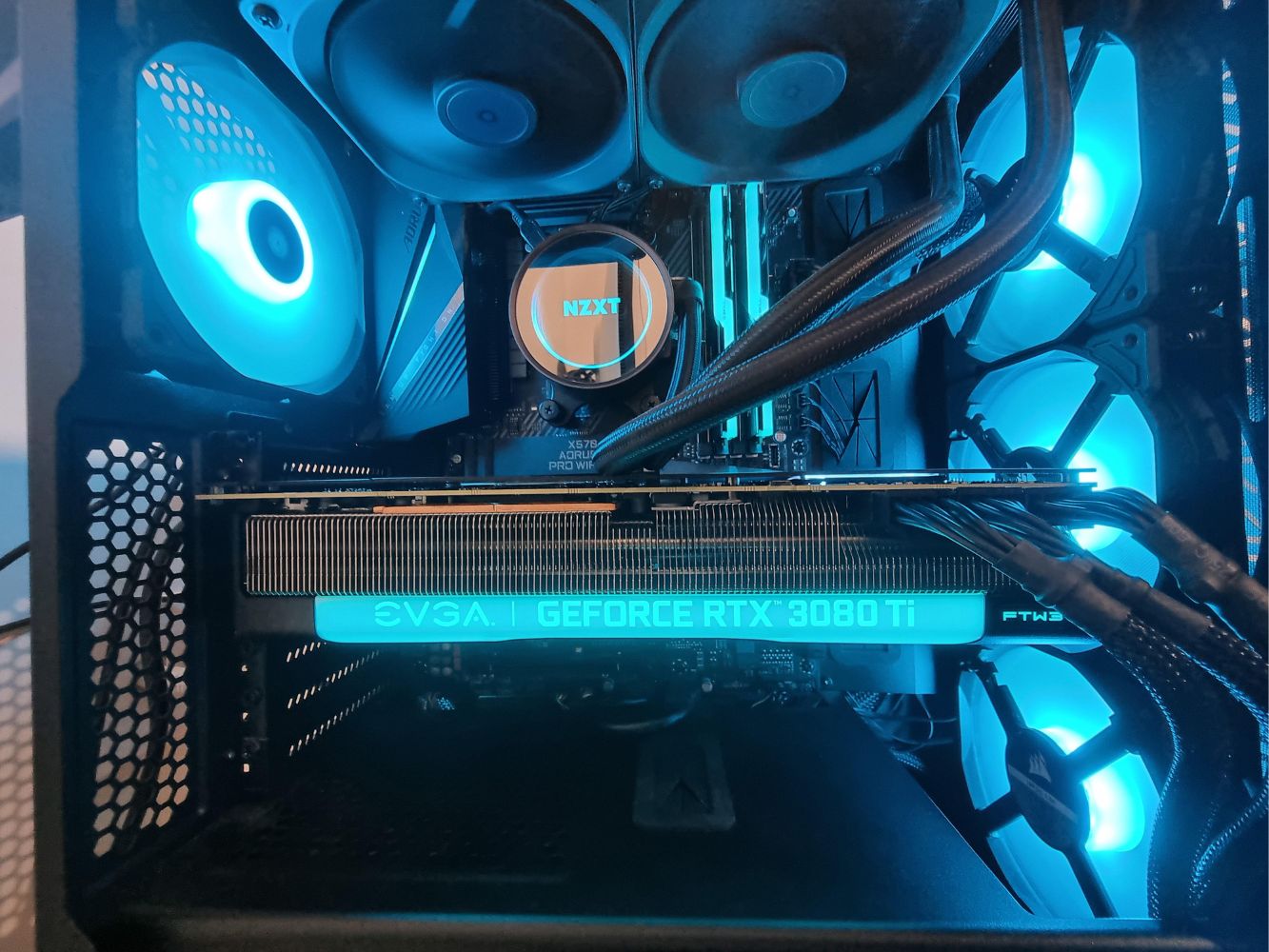What Is a PC Case?
A PC case, also known as a computer case or chassis, is the enclosure that houses all the vital components of a computer, such as the motherboard, power supply unit, hard drives, and other peripherals. It serves as a protective shell, ensuring the safety and organization of internal components while providing efficient airflow for cooling.
PC cases come in various shapes, sizes, and designs to accommodate different hardware configurations and personal preferences. They play a crucial role in determining the overall aesthetics and functionality of a computer system.
The primary function of a PC case is to protect the delicate internal components from dust, moisture, and physical damage. It also helps to manage cables and wires, reducing clutter and improving airflow. Additionally, cases often feature convenient access points, such as front USB ports, audio jacks, and drive bays, making it easier to connect peripherals and expand storage.
PC cases range from compact small form factor (SFF) cases designed for space efficiency to full-tower cases that offer ample room for high-performance hardware and extensive cooling solutions. The choice of a PC case depends on factors like intended usage, compatibility requirements, and personal preferences in terms of aesthetics and size.
Overall, a PC case is an essential component in building a computer system. It not only provides protection and organization but also contributes to the overall performance and visual appeal of the setup. Understanding the different types and features of PC cases is crucial for ensuring compatibility and achieving the desired functionality and aesthetics for your computer build.
Common PC Case Sizes and Form Factors
When choosing a PC case, it is important to consider the size and form factor that best suits your needs and hardware compatibility. Different case sizes and form factors determine the amount of available space for components and cooling options. Here are some common PC case sizes and form factors:
- Full Tower: Full tower cases are the largest and provide the most spacious interior. They can accommodate multiple graphics cards, extensive cooling setups, and have ample room for storage drives. These cases are ideal for users who need maximum expandability and have high-performance hardware requirements.
- Mid Tower: Mid tower cases strike a balance between size and functionality. They offer good compatibility with most hardware configurations, including ATX motherboards and multiple GPU installations. Mid tower cases are a popular choice among gamers and enthusiasts due to their versatility and manageable size.
- Mini Tower: Mini tower cases, also known as micro ATX cases, are smaller than mid towers. They are suitable for compact builds or budget systems with limited space. Although mini towers have a smaller footprint, they can often accommodate micro ATX or mini ITX motherboards with some compromise on expansion options.
- Small Form Factor (SFF): SFF cases are the smallest in size and are designed for space-constrained environments or those seeking a minimalist aesthetic. These cases prioritize compactness over expandability, usually supporting mini ITX or thin mini ITX motherboards. SFF cases require careful component selection to ensure compatibility.
- Open Air/Test Bench: Open air or test bench cases expose the components for easy access and maximum airflow. They are commonly used by enthusiasts and overclockers for easy hardware modifications and superior cooling. However, these cases lack dust protection and are not ideal for environments with high dust levels.
When selecting a PC case size and form factor, consider the available space, future upgrade possibilities, and compatibility with the components you plan to use. It’s important to ensure that your chosen case can accommodate your desired motherboard size, GPU length, PSU form factor, and cooling options. Additionally, consider factors such as cable management, drive bays, and overall design to meet your specific needs and preferences.
Factors to Consider for Compatibility
When building a PC, it is crucial to ensure compatibility between the PC case and the various components you intend to install. Incompatible components can lead to installation difficulties, performance issues, or even damage to your hardware. Here are some key factors to consider for compatibility:
- Motherboard: The motherboard is the backbone of your PC and determines the overall compatibility of your components. Ensure that your PC case can accommodate the form factor of your chosen motherboard, such as ATX, micro ATX, or mini ITX.
- PSU (Power Supply Unit): Check the form factor and dimensions of your PSU to ensure it will fit properly in the PC case. Verify whether the case supports the PSU’s form factor, such as ATX, SFX, or TFX. Additionally, consider the PSU’s power rating to meet the power requirements of your system.
- GPU (Graphics Card): Check the maximum GPU length supported by the PC case and compare it to the length of your graphics card. Ensure that there is sufficient space for the GPU to fit comfortably and that it will not interfere with other components.
- CPU Cooler: Consider the height restrictions for CPU coolers in the PC case. Ensure that the cooler you choose does not exceed the maximum height allowed by the case. This will prevent any clearance issues with other components like the side panel or RAM modules.
- Storage: Determine the number and size of storage devices you plan to install, such as SSDs or HDDs. Check if the case provides sufficient drive bays or mounting options to accommodate your storage configuration.
- Cooling System: Evaluate the cooling options available in the PC case, such as fan mounts or radiator support. Consider whether the case can accommodate the number and size of fans or radiators required for your cooling solution, ensuring efficient airflow and optimal cooling performance.
Keep in mind that different PC cases have varying compatibility specifications and limitations. It is vital to thoroughly research and review the specifications provided by the case manufacturer. Additionally, consider future upgrade possibilities to ensure the longevity and flexibility of your PC build.
By carefully considering these compatibility factors, you can ensure that your chosen PC case accommodates your components properly, allowing for a smooth and successful build.
Motherboard Compatibility
One of the critical factors to consider when choosing a PC case is its compatibility with your motherboard. The motherboard plays a central role in your computer system, connecting and facilitating communication between various hardware components. Here are the key considerations for motherboard compatibility:
Form Factor: The form factor of the motherboard determines its size and shape. The most common form factors are ATX, micro ATX, and mini ITX. Ensure that the form factor of your motherboard is compatible with the PC case you choose. A larger case can typically accommodate smaller form factors, but not vice versa.
Mounting Points: Check if the PC case has pre-installed standoffs or mounting holes that align with the mounting points on your motherboard. These mounting points keep the motherboard securely in place and prevent any short circuits caused by contact with the case. Ensure that the motherboard’s mounting holes match the standoffs provided in the case.
Expansion Slots: Consider the number and type of expansion slots present on the motherboard. These slots allow you to install graphics cards, sound cards, Wi-Fi cards, and other expansion devices. Verify that the PC case has sufficient clearance and corresponding expansion slot brackets to accommodate your motherboard’s expansion slots.
I/O Shield: The I/O shield is a metal plate that fits into the back of the PC case, providing access to the motherboard’s rear ports. Ensure that the PC case includes or allows for the installation of the appropriate I/O shield for your motherboard. It is important for a clean and secure fit, promoting proper grounding and protecting against dust and debris.
Cable Management: Consider the cable management options provided by the PC case. Look for routing holes, tie-down points, and space behind the motherboard tray to efficiently route and manage cables. Proper cable management not only improves airflow but also facilitates easier maintenance and upgrades in the future.
Additional Features: Different motherboards offer various features, such as M.2 slots, RGB headers, or Wi-Fi connectivity. Ensure that the PC case has the necessary provisions or clearance to accommodate these features, allowing you to utilize them without any restrictions.
When selecting a PC case, closely review the specifications and documentation provided by the manufacturer to ensure compatibility with your specific motherboard model. Taking into account these motherboard compatibility considerations will help you avoid any issues and ensure a successful build.
PSU (Power Supply Unit) Compatibility
When choosing a PC case, it is crucial to consider its compatibility with your chosen PSU (Power Supply Unit). The PSU provides electrical power to all the components of your computer. Here are some key factors to consider for PSU compatibility:
Form Factor: PSU form factors vary, with ATX being the most common. Ensure that the PC case can accommodate the form factor of your PSU. This ensures a proper fit and allows for secure mounting and connection to the motherboard and other components.
Power Rating: The power rating of the PSU determines the amount of electrical power it can provide to your system. Ensure that the chosen case has enough space and provisions to accommodate a PSU with the appropriate power rating to meet the requirements of your components. Consider factors like CPU and GPU power consumption, number of drives, and other peripherals.
Mounting Space: Check if the PC case has enough space to accommodate your chosen PSU. Consider both the length and depth of the PSU, ensuring that it fits comfortably without any clearance issues. Also, consider cable routing and how a larger PSU may impact airflow and cable management within the case.
Cable Management: Consider the cable management options provided by the PC case in relation to your PSU. Look for features such as cable routing holes, tie-down points, and sufficient space behind the motherboard tray to route and manage the PSU cables efficiently. A well-managed cable system promotes better airflow, easier maintenance, and a clean overall aesthetic.
Modularity: Modular PSUs offer the flexibility of detaching unused cables, reducing clutter and improving airflow. Check whether the PC case supports modular PSU installations, allowing you to take full advantage of cable management options and customize your cable connections according to your specific needs.
PSU Shroud: Some PC cases feature a PSU shroud that conceals the PSU and its cables, providing a cleaner and more organized look. Ensure that the case includes a PSU shroud or has sufficient space for a shroud if you prefer a tidier internal appearance.
Premium Features: Consider any additional features provided by the PC case that enhance PSU compatibility and usage. This may include features like bottom-mounted PSU installation, dust filters for PSU intake, or vibration dampening to reduce noise.
When selecting a PC case, carefully review the specifications and documentation provided by the manufacturer to ensure compatibility with your chosen PSU. Taking into account these PSU compatibility considerations will help you build a reliable and efficient system.
GPU (Graphics Card) Compatibility
When choosing a PC case, it is important to consider its compatibility with your chosen GPU (Graphics Card). The GPU is responsible for rendering graphics and plays a crucial role in gaming and other graphical-intensive tasks. Here are some key factors to consider for GPU compatibility:
Length: The length of the GPU is a critical aspect to consider when selecting a PC case. Check the maximum GPU length supported by the case and compare it to the length of your graphics card. Ensure that there is sufficient space for the GPU to fit comfortably without any interference with other components like the storage drives or motherboard components.
Width and Height: In addition to length, consider the width and height of your graphics card and ensure that the case provides enough clearance. Some high-performance GPUs may also have larger heatsinks or bulky cooling solutions, so ensure that the case can accommodate these dimensions without any clearance issues.
PCIe Slots: Verify the number and spacing of PCIe slots on the case. The graphics card is typically installed in a PCIe slot on the motherboard. Ensure that the case has the necessary number of slots and that they are positioned to align with the appropriate PCIe slot on your motherboard.
PCIe Power Connectors: High-performance GPUs often require additional power connectors, such as 6-pin or 8-pin PCIe power connectors. Ensure that the case has sufficient space and provisions to route and connect the necessary power cables to the graphics card without any constraints or obstructions.
Vertical GPU Mounting: Some PC cases offer the option to vertically mount the GPU, providing a visually appealing showcase for your graphics card. If vertical mounting is your preference, ensure that the case supports this feature and includes the necessary PCIe riser cable or mounting bracket.
Cooling Space: Consider the impact of the graphics card on the cooling capabilities of the case. Ensure that the case has adequate ventilation and airflow options to dissipate the heat generated by the GPU, preventing thermal throttling and maintaining optimal performance.
GPU Sag: Long and heavy graphics cards may experience sag over time, potentially stressing and damaging the PCIe slot. Look for cases with GPU sag prevention mechanisms, such as reinforced brackets or GPU support brackets, to maintain the structural integrity of the graphics card.
When selecting a PC case, carefully review the specifications and documentation provided by the manufacturer to ensure compatibility with your chosen GPU. Considering these GPU compatibility factors will ensure proper fitting, cooling, and overall performance of your system.
CPU Cooler Compatibility
When choosing a PC case, it is essential to consider its compatibility with your chosen CPU cooler. The CPU cooler plays a crucial role in keeping your processor cool, ensuring optimal performance and longevity. Here are some key factors to consider for CPU cooler compatibility:
Height: The height of the CPU cooler is a critical factor to consider when selecting a PC case. Check the maximum CPU cooler height supported by the case and compare it to the height of your chosen cooler. Ensure that there is sufficient space for the CPU cooler to fit comfortably without interfering with other components like the side panel or RAM modules.
Clearance: Apart from the overall height, consider the clearance around the CPU socket area. Some CPU coolers feature large heatsinks or additional fans that may require extra space to fit properly. Verify that the case provides sufficient clearance around the CPU area to avoid any interference.
Mounting System: Different CPU coolers employ different mounting systems, such as backplates, brackets, or retention mechanisms. Ensure that the case allows for the installation of your chosen CPU cooler’s mounting system without any hindrance or compatibility issues.
Fan Placement: Check the fan placement options available in the case and how it aligns with the CPU cooler. Ensure that the case has provisions for sufficient fan mounts or radiators to accommodate the CPU cooler’s fans. This will ensure proper airflow and efficient cooling performance.
Cable Management: Consider the cable management options provided by the PC case in relation to the CPU cooler. Look for features such as routing holes, tie-down points, and space behind the motherboard tray to route and manage the CPU cooler’s cables, such as fan cables or RGB lighting cables.
Motherboard Compatibility: Verify the compatibility of the PC case with your chosen motherboard regarding CPU socket placement. Some cases offer more space around the CPU socket area, allowing for better compatibility with a wider range of CPU coolers.
Cooling Performance: Consider the impact of the CPU cooler on the overall cooling capabilities of the case. Ensure that the case has adequate ventilation, airflow options, and provisions for extra cooling fans or radiators to maintain optimal temperatures for both the CPU and other components.
When selecting a PC case, carefully review the specifications and documentation provided by the manufacturer to ensure compatibility with your chosen CPU cooler. Considering these CPU cooler compatibility factors will ensure proper fitting, airflow, and efficient cooling performance for your system.
Storage Compatibility
When selecting a PC case, it is essential to consider its compatibility with your chosen storage devices. Storage drives, such as SSDs (Solid-State Drives) and HDDs (Hard Disk Drives), are crucial components for storing and accessing data. Here are some key factors to consider for storage compatibility:
Drive Bays: Check the number and type of drive bays available in the PC case. Drive bays are the slots or compartments where you can install your storage drives. Ensure that the case has sufficient drive bays to accommodate the desired number of SSDs or HDDs you plan to install.
Drive Sizes: Consider the size of your storage drives and ensure compatibility with the case. Most cases support 2.5-inch and 3.5-inch drives, but some may have specific mounting options or dedicated brackets for certain drive sizes. Verify that the case has appropriate mounting options for your specific drive sizes.
Mounting Options: Check the available mounting options in the PC case for your storage drives. Some cases offer tool-less drive installation, allowing for easy and convenient installation or removal of drives without the need for any additional tools. Others may require screws or brackets to secure the drives in place.
M.2 Support: If you plan to use M.2 SSDs, ensure that the case provides support for M.2 drives. Look for M.2 slots or mounting points that align with the motherboard’s M.2 slots. Confirm that these slots are not obstructed by other components like the GPU or heatsinks.
Drive Clearance: Consider the space required by your storage drives, especially if you have larger or longer drives. Ensure that there is sufficient clearance within the case to accommodate the drives without interference with other components or cables.
Cable Management: Check the cable management options provided by the case for the storage drives. Look for routing holes, tie-down points, and space behind the motherboard tray to efficiently route and manage the drive cables. This helps with better airflow, easier maintenance, and a cleaner overall appearance.
Hot-Swap Support: Some cases offer hot-swap drive bays, allowing for easy removal and insertion of drives without having to power down the system. If hot-swapping is essential to you, ensure that the case includes the necessary hot-swap drive bays or supports an external hot-swap dock.
When selecting a PC case, carefully review the specifications and documentation provided by the manufacturer to ensure compatibility with your chosen storage devices. Considering these storage compatibility factors will help you properly accommodate and manage your storage drives within the system.
Cooling System Compatibility
When choosing a PC case, it is crucial to consider its compatibility with the cooling system you plan to use. Proper cooling is essential to maintain optimal performance and prevent overheating of your components. Here are some key factors to consider for cooling system compatibility:
Fan Mounts: Check the number and size of fan mounts available in the PC case. Fans are a popular cooling solution, and having ample fan mounts allows for optimal airflow. Ensure that the case provides enough fan mounts to accommodate the number and size of fans you plan to install for optimal cooling performance.
Radiator Support: If you are planning to use liquid cooling, verify if the case supports radiator installations. Consider the radiator sizes supported by the case, such as 120mm, 240mm, 360mm, etc. Verify that mounting points and brackets are available to install the radiator securely in the desired position within the case.
Airflow Options: Look for features in the case that promote efficient airflow, such as mesh panels, ventilation holes, or air filters. Good airflow prevents heat buildup and ensures proper cooling for your components. Check whether the case has dust filters to keep the system clean and reduce maintenance requirements.
CPU Cooler Clearance: Consider the clearances around the CPU area and ensure that there is enough space to accommodate your desired CPU cooler. This includes considering the cooler’s height, width, and fan sizes to ensure proper fitment within the case without any clearance issues.
GPU Clearance: Verify that there is enough space between the GPU and the case’s side panel for proper airflow to cool the graphics card. This is especially important if you are using a high-performance GPU, as they tend to generate more heat.
Cable Management: Look for features that allow for efficient cable management, such as routing holes, tie-down points, and space behind the motherboard tray. Proper cable management improves airflow and ensures that cables do not obstruct the cooling system’s functioning or impede the fans’ operation.
Additional Cooling Options: Consider any additional cooling options available in the case, such as support for additional case fans, fan controllers, or liquid cooling reservoirs. These additional options can help provide enhanced cooling performance and flexibility.
Fan and Radiator Placement: Plan the placement of fans and radiators strategically within the case to achieve optimal cooling efficiency. Consider the intake and exhaust locations to ensure proper airflow direction and heat dissipation.
When selecting a PC case, carefully review the specifications and documentation provided by the manufacturer to ensure compatibility with your desired cooling system. Considering these cooling system compatibility factors will help you build a well-cooled and efficient system that can handle the demands of your components.
Case Component Compatibility Checklist
Compatibility is a crucial factor to consider when choosing a PC case. To ensure that all your components fit and work together seamlessly, here is a handy checklist to keep in mind:
Motherboard:
- Check the form factor support of the case and ensure it matches your motherboard size (ATX, micro ATX, mini ITX, etc.).
- Verify if the case has the necessary mounting points or standoffs that align with your motherboard.
PSU (Power Supply Unit):
- Check the PSU form factor support of the case (ATX, SFX, TFX, etc.) and ensure it matches your PSU size.
- Ensure that the case has enough space to accommodate the length and depth of your PSU.
GPU (Graphics Card):
- Check the maximum GPU length supported by the case and ensure it can accommodate your graphics card.
- Verify that the case has enough clearance and slots for your GPU’s width and height.
CPU Cooler:
- Check the maximum CPU cooler height supported by the case and ensure it can fit your chosen cooler.
- Ensure that the case offers sufficient clearance around the CPU socket area for larger coolers or additional fans.
Storage:
- Check the number and type of drive bays available in the case and ensure it can accommodate your SSDs or HDDs.
- Verify the case’s support for M.2 SSDs and ensure the necessary slots are available on the motherboard tray.
Cooling System:
- Check the number and size of fan mounts available in the case and ensure they can accommodate your desired fans.
- Consider if the case supports radiator installations and their sizes for liquid cooling options.
Other Components:
- Check for compatibility with any other additional components you plan to install, such as sound cards, Wi-Fi adapters, or PCIe expansion cards.
- Ensure that the case has the necessary expansion slots and clearance for these components.
By using this compatibility checklist, you can confidently select a PC case that will support all your components and ensure a successful and hassle-free build.
Conclusion
Choosing a compatible PC case is crucial for a successful and efficient computer build. Consider the various factors discussed above, such as motherboard compatibility, PSU compatibility, GPU compatibility, CPU cooler compatibility, storage compatibility, and cooling system compatibility.
Take the time to carefully review the specifications and documentation provided by the case manufacturer. This will ensure that your chosen case can accommodate all your components and provide the necessary features for optimal performance and functionality.
Remember that compatibility is not limited to individual components but also extends to the overall design and layout of the case. Consider factors like cable management, drive bays, cooling options, and aesthetics to ensure the best fit for your needs.
By ensuring compatibility between your components and the PC case, you can avoid installation issues, minimize the risk of hardware damage, and enjoy a well-cooled and efficient system.
So, before you embark on your PC building journey, take the time to research, compare, and carefully select a PC case that meets your compatibility requirements and aligns with your overall vision for your computer system. With the right case, you can create a well-organized, aesthetically pleasing, and high-performing PC that meets all your needs and expectations.







